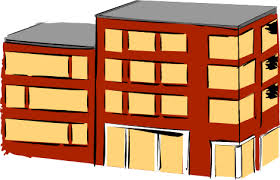So you’ve completed on your flat purchase – and then what? Where can it all go wrong?
Typically once you have completed your flat purchase, you move in, file away any papers received from your solicitor, and carry on with living your life in their new home. Many of you will treat the flat as though it is freehold and not give a moment’s thought as to the advice you were given in relation to what the lease sates you can and can’t do.
 Rarely going back to check your lease or the report from your solicitor, you decide to decorate/refurbish your home, and this is where you come unstuck.
Rarely going back to check your lease or the report from your solicitor, you decide to decorate/refurbish your home, and this is where you come unstuck.
Whilst you have an obligation to carry out internal redecorations (typically every five years)many overlook the fact that there is an obligation not to alter the layout of the property or cut injure or maim the structural walls, either without the Landlord’s consent or as a blanket prohibition.
This means that you are not necessarily free to create an en-suite bathroom in the bedroom, or remove the wall between the living and dining rooms to create an open plan living space, block up a doorway and create an alternative opening because it better serves your flat or style of living. If you own a top floor flat which has access to the roof space, this does not automatically mean that the roof space is yours. Most of the time the roof space actually belongs to the freeholder, so you are not free to either store your items in the roof space or convert it to habitable space. Even the windows of a flat can belong to the freeholder, in which case you will not have a right to replace them at your discretion. This is because the freehold and main structure of the building usually belong to the freeholder.
Other covenants which are often forgotten are restrictions on letting the flat out, and an obligation to keep the floors carpeted (except the kitchen and bathroom).
Even if you have a share of the freehold, you hold two distinct interests in the property with different obligations. So, you still need to obtain the freeholder’s consent to any works.
Obtaining planning permission and/or building regulation consent for the above does not negate the need for the freeholder’s consent. A Local Authority will grant or refuse consent to such application based on their policies and not based on the terms of your lease.
Don’t forget your lender’s conditions, which generally state you cannot carry out works to the flat (or house) without obtaining the lender’s consent.
More often than not, works are carried out and you are none the wiser until you come to sell your flat. The lease plan is sent to the buyer with a request for the buyer to confirm that the physical layout of the flat is the same as the layout in the lease plan,
or the survey report highlights the fact that walls have been removed, or doorways repositioned and then the can of worms is opened. Now you are told the freeholders should have been obtained and a licence to alter given. Some freeholders will give retrospective consent and licence to alter and others will not, especially if it cannot be ascertained that the works complied with planning and/or building regulations.
Some breaches will be “continuing” so no matter how long ago they were carried out, the freeholder can still take action against you for the breach and require you to remedy the breach – but the problem is that you may not be able to and this could give the freeholder the right to end the lease or require you to pay a sum of money (including all legal and surveyor s fees).
So before embarking on any refurbishments, first check your lease provisions to ensure that you have the right to do so. If in doubt check the position with your solicitor or your freeholder direct.
This article was written by Lucy Ispani and appears in the April edition of Wimbledon’s Time and Leisure magazine:
Time and Lesiure – Lettings Market
Call us on 0345 370 1000 for more details.

